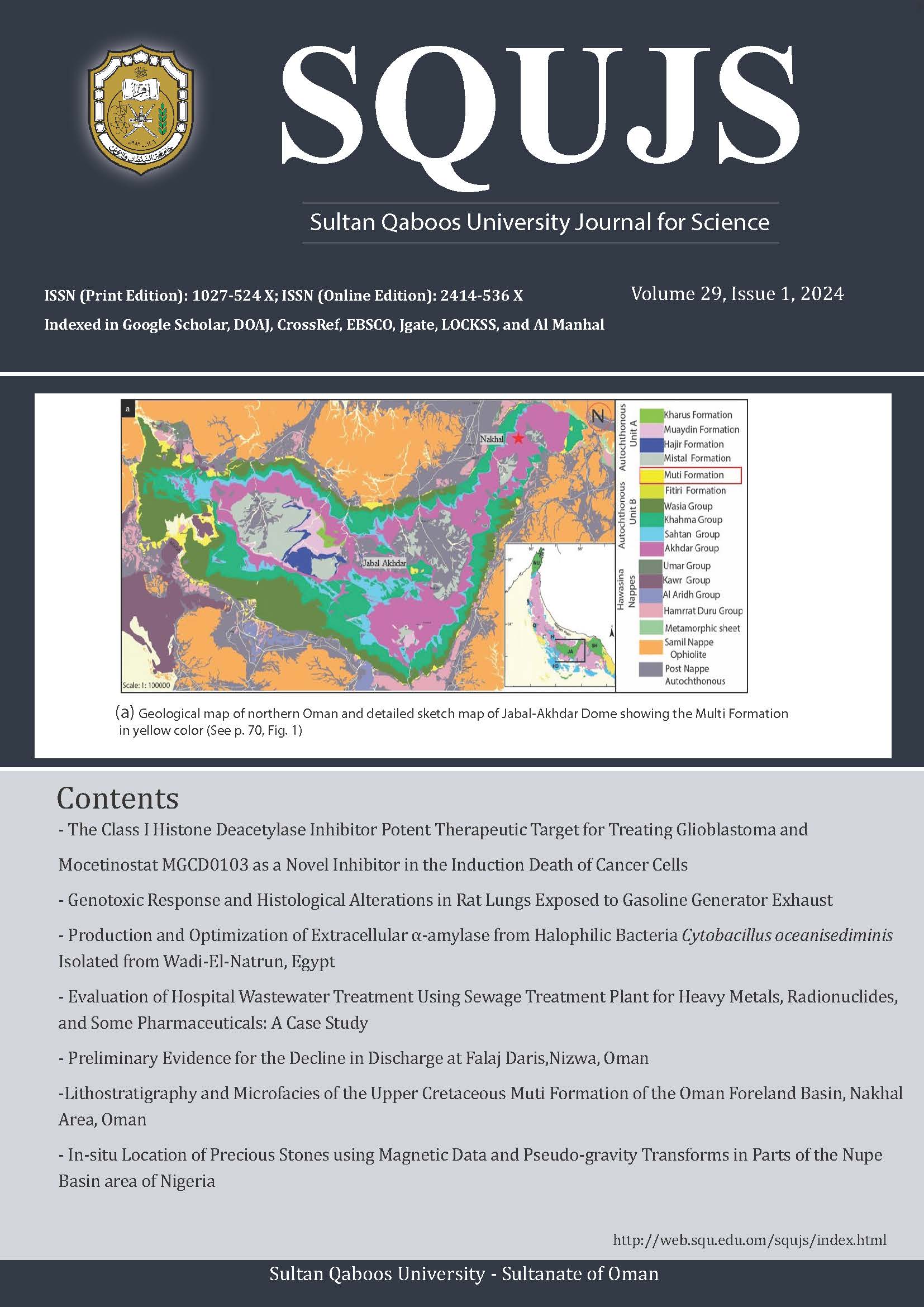Main Article Content
Abstract
The Upper Cretaceous Muti Formation was deposited in the Oman Foreland Basin during the obduction of the allochthonous units on the eastern margin of the Arabian Platform. The formation is exposed in various isolated outcrops around Jabal Akhdar Mountain and is located between the Mesozoic platform carbonates below and the allochthonous nappe above. The current study is the first to describe the outcrops of the Muti Formation in the Nakhal area. It focuses on the lithofacies, microfacies distribution, and the characterization of the depositional environment of the formation. The lithofacies and microfacies of the formation are described from two measured sections in the study area. The Nakhal section is about 50 m thick and consists of four lithofacies: marl, bedded limestone, nodular limestone, and clay. A total of four microfacies are identified, including echinoderm-spine wackestone, bioclastic packestone, arenaceous wackestone, and mudstone. Diagenetic features such as fractures, cementations, and dissolutions, and their products, for instance, porosities, were also identified, and their paragenetic history was reconstructed. Additionally, microfossils, such as bryozoan fragments, calcispheres, bivalves, fragments of echinoids, and brachiopod fragments, benthic and planktonic foraminifera were recognized. Based on lithological and biotic variations, it is suggested that the Muti Formation in the Nakhal area was deposited in a shallow marine environment on the outer to the mid-carbonate shelves. This formation is subjected to diagenetic changes starting with eogenesis in marine settings followed by burial diagenesis, and subsequently, the formation is exposed to the telogenetic diagenesis phase.
Keywords: Muti Formation, Nakhal Area, Oman Foreland Basin, Upper Cretaceous, Jabal Akhdar.
Article Details

This work is licensed under a Creative Commons Attribution-NoDerivatives 4.0 International License.

